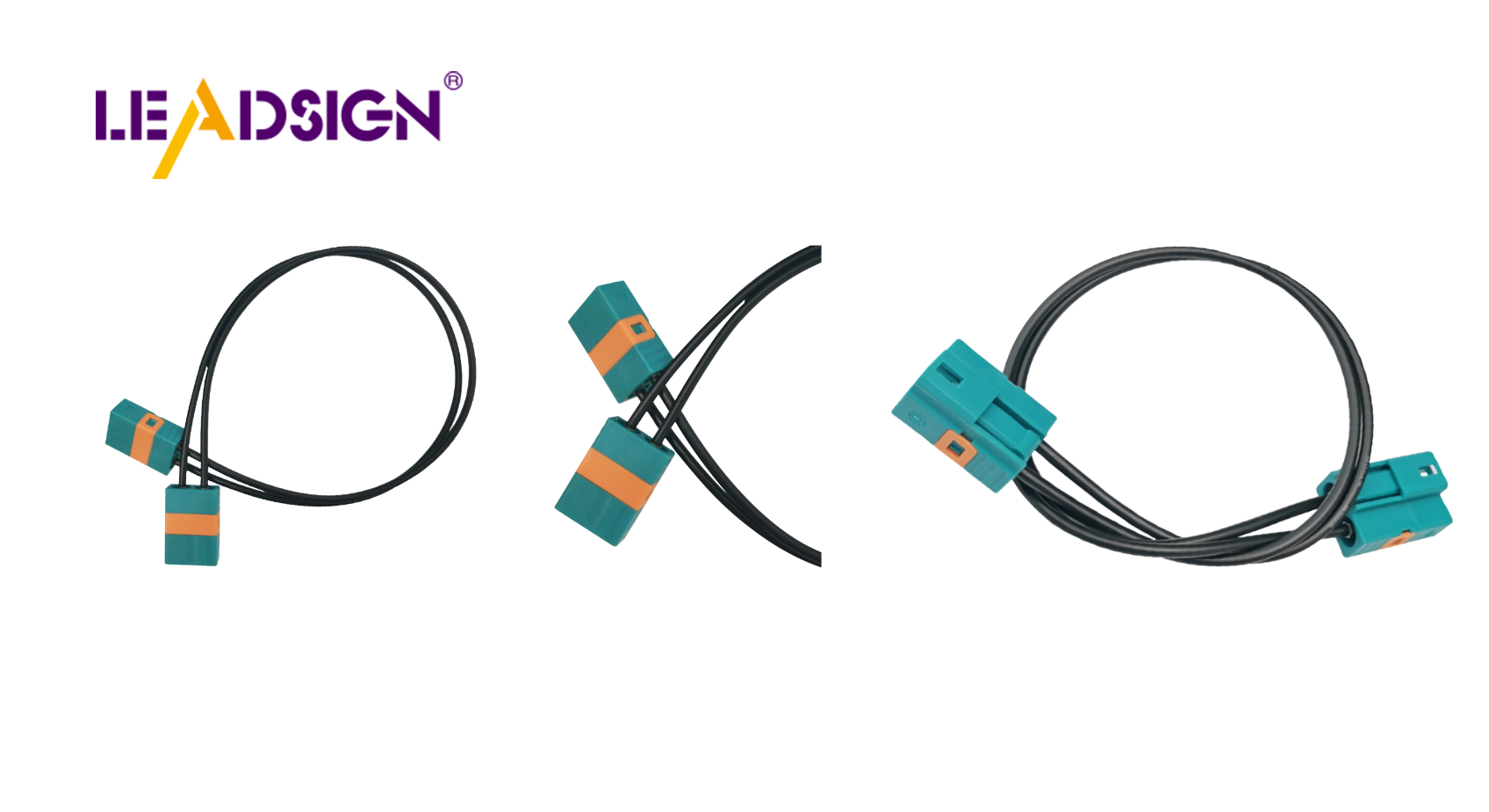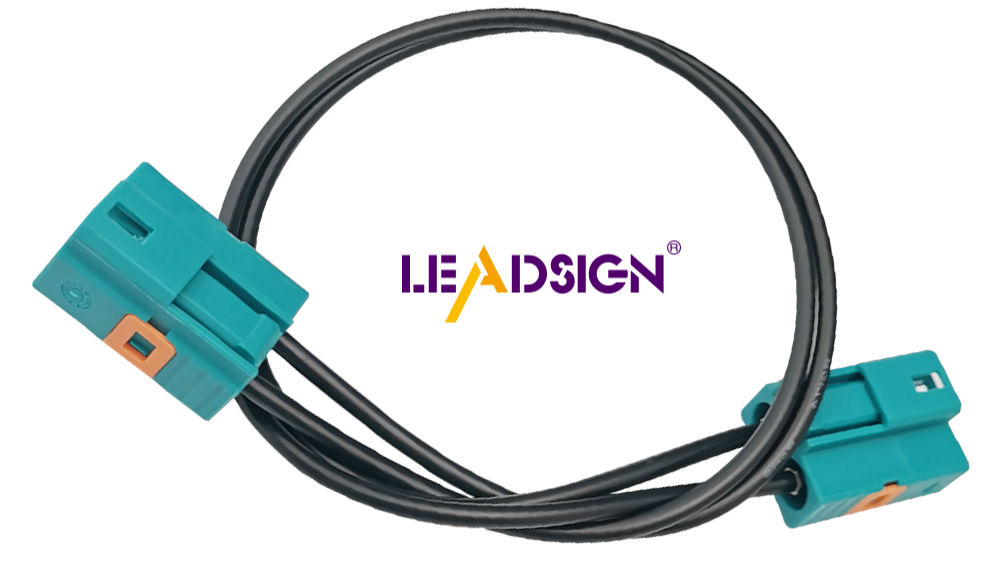Installing Automotive Plugs and Connectors: Best Practices

If you install a car connector plug correctly, they remain secure and function effectively. Proper installation prevents loose plugs, which can lead to power loss and damage to car components. Follow the best practices to protect plugs from water and wind, preventing rust and ensuring they operate smoothly. Quality car connector plugs transmit signals within the vehicle, ensuring everything functions properly. By doing this, you enhance your car's reliability and ensure the safety of everyone inside.
Key Takeaways
Use the right tools, such as wire strippers, crimpers, and a multimeter, to ensure a safe and effective installation of car connector plugs.
Always prioritize safety by wearing protective gear and keeping your workspace organized to prevent accidents during installation.
Before starting, unplug the battery to avoid electrical shocks and short circuits, ensuring a safe working environment.
Choose the correct size and type of connector plugs for your vehicle to maintain optimal electrical performance and prevent future issues.
After connecting wires, protect them with heat shrink tubing to keep out moisture and dirt, which can lead to corrosion and failure.
Regularly check and maintain your car's connector plugs to identify and fix any loose or damaged connections, ensuring reliable vehicle performance.
Follow a systematic approach to installation, including preparing wires, securely connecting them, and testing the connections with a multimeter for functionality.
Tools and Materials for Car Connector Plug Installation

When you want to install a car plug, having the right tools is important. They make the job easier and keep the connection safe. Let's see what you need.
Important Tools for Car Plug Connectors
First, get some important tools. These help you work with wires and plugs easily.
Wire strippers and crimpers
Wire strippers and crimpers are very helpful. Use wire strippers to take off the wire cover without breaking it. Crimpers help you attach ends to wires tightly.
Multimeter
A multimeter is useful for checking wires. It measures voltage, current, and resistance. With it, you can check if your wires work right and fix problems.
Heat gun or soldering iron
A heat gun or soldering iron is needed for strong connections. Use a heat gun to shrink tubes around plugs for safety. A soldering iron joins wires together well.
Needed Materials for Plug Installation
Now that you have tools, let's see the materials you need.
Connector plugs and terminals
Connector plugs and terminals are key parts. Pick the right size and type for your car. They help your car's electric system work well.
Heat shrink tubing
Heat shrink tubing keeps connections safe. After crimping or soldering, put the tube over the connection and shrink it with heat. This stops water and dirt from getting in.
Electrical tape
Electrical tape is good for keeping wires safe. Wrap it around wires to stop short circuits and protect them.
By getting these tools and materials, you're ready for a good car plug installation. Remember, being ready helps your plugs fit your car safely.
Safety Tips for Putting in Connectors
When you work with car connectors, safety is most important. By being careful, you keep yourself safe and do the job well. Let's look at some key safety tips.
Personal Safety Tips
Wearing safety gear
Always wear safety gear when putting in connectors. Gloves keep your hands safe from sharp wires and hot tools. Safety glasses protect your eyes from flying bits. Wearing the right gear helps stop injuries.
Keeping a safe workspace
Make sure your work area is safe and neat. Keep tools and stuff close by to avoid moving too much. Make sure the place is bright so you can see well. A clean workspace stops accidents and makes work easier.
Electrical Safety Tips
Unplugging the battery
Before starting, unplug the battery. This stops shocks and short circuits. Take off the ground wire first to make the system safe. Remember, safety is first.
Stopping short circuits
Short circuits can break things. To stop them, check your connections twice. Make sure wires are covered and not touching. Use a multimeter to check if everything is right. By checking well, you keep your car's system safe.
Expert Advice:
LEADSIGN-AUTO, a car connector expert, says, "By having the right tools and staying safe, you're ready to put in car wire connectors well."
By following these safety tips, you make a safe place for putting in car connectors. Stay safe, and your work will go well.
How to Install Car Electrical Plug Connectors
Putting in car plug connectors might seem hard. But with the right steps, it's easy. Let's look at simple steps for a good installation.
Getting Ready for Connector Installation
Before starting, get ready well. This makes sure you have everything you need.
Finding the right wires and connectors
First, find the right wires and connectors for your car. Check your car's wiring map to match wires with the right plug. This is important because wrong connectors can cause problems. Take your time to be sure.
Getting wires ready to connect
Next, get the wires ready. Use wire strippers to take off the wire cover. Be careful not to break the wires. Twist the wire ends together to make them strong. This helps make a good connection.
Connecting the Connector
Now, it's time to connect the wires. Attach the connectors to the wires well.
Crimping or soldering the ends
Pick crimping or soldering for the ends. Crimping uses a tool to press the end onto the wire. Soldering melts metal to join the wire and end. Both ways make a strong link.
Protecting the connection with heat shrink tubing
After connecting, protect it with heat shrink tubing. Slide the tube over the join and heat it. This keeps water and dirt out. A safe connection stops future problems.
Checking the Connector Connection
After connecting, check if it works right.
Using a multimeter to test
Use a multimeter to test the connection. Set it to check if electricity flows. Touch the ends of the wires. A beep means it's good. This test shows if the connection is fine.
Making sure the connection works
Finally, make sure the connection works by turning on the car. See if the part works right. If it does, you did it! If not, check the steps again.
Expert Tip:
Experts say that putting in car plug connectors right makes them work well. Skilled workers know how to handle tricky wires, making the system work better.
By following these steps, you can put in car plug connectors easily. Remember, getting ready and doing it carefully is important.
Fixing Common Connector Problems
When working with car plug connectors, problems can happen. Knowing how to fix them keeps your car's electrical system working well. Let's look at some common problems and how to solve them.
Fixing Bad Connections
Bad connections can make lights flicker or stop working. Fixing these is important for your car's performance.
Finding loose or bad connections
Loose connections can cause power problems. To find them, gently pull on the wires. If they move, the connection is loose. Bad connections might look rusty or worn out, stopping electricity flow.
Fixing by crimping or soldering
After finding a loose connection, fix it. Crimping or soldering wires makes them secure. Use a crimper to press the connector onto the wire tightly. If soldering, heat the iron and join the wire and connector with solder. This makes a strong connection, stopping future problems.
Fixing Electrical Problems
Electrical problems can cause big issues in your car. Finding and fixing them is key for good performance.
Finding short circuits
Short circuits happen when wires touch wrongly, causing too much electricity. This can blow fuses or break parts. Use a multimeter to check wires. If it beeps, there's a short circuit.
Fixing wrong wiring
Wrong wiring can make lights not work. To fix this, check your car's wiring map. Make sure each wire goes to the right spot. If wrong, fix the wires as shown in the map. This makes sure your car's system works right.
Tip: Regularly check your car plug connectors to stop these problems. Cleaning them often helps them last longer.
By knowing these common connector problems and fixing loose connections, you keep your car's electrical system in good shape. Remember, a little care helps your lights and parts work well.
When putting in car plugs, use the right tools. Follow safety rules too. This makes sure your work is safe and works well. Doing things the right way helps your car work better. It also keeps everyone safe. Good installation stops problems that might cause danger. A well-done connector keeps your car running well. Always think about doing a good job and staying safe with car wires.
FAQ
What Do Car Connectors Do? Are They Safe?
Car connectors are important for your car. They send electric signals to different parts, like the engine and radio. These signals help car parts talk and work together. Without good connectors, car parts won't work right, causing problems and safety risks.
How Do I Pick The Right Connector For My Trailer?
To pick the right connector for your trailer, check what your trailer needs and what your car can handle. Look in your car's manual for advice. You can also ask an expert to make sure it's safe. The right connector makes sure your trailer and car connect well.
Can I Put In Trailer Connectors Myself?
Yes, you can put in trailer connectors if you have the right tools and follow safety steps. Always unplug the battery first. Follow the blog's guide for a safe setup. If unsure, ask a pro for help.
What Problems Happen With Trailer Connectors?
Trailer connectors can have loose wires, rust, or wrong wiring. These problems can make lights flicker or not work. Check your connectors often for damage. Fix loose wires quickly to keep your trailer safe.
How Do I Keep My Trailer Wiring Dry?
To keep trailer wiring dry, use heat shrink tubes and tape. These cover connections and stop water. Check your wiring often for damage and replace bad parts to keep it safe.
Why Isn't My Trailer's Electric System Working?
If your trailer's electric system isn't working, look for loose or rusty wires. Use a multimeter to check wires. Make sure all wires are in the right place. If it still doesn't work, ask a pro for help.
How Often Should I Check My Trailer Wiring?
Check your trailer wiring often, especially before long trips. Look for damage or rust. Regular checks stop problems and keep your trailer working well.
Can I Use The Same Connectors For Different Trailers?
Some connectors fit many trailers, but check each trailer's needs. Different trailers need different electric setups. Make sure connectors match the trailer to avoid problems.
What Tools Do I Need For Trailer Wiring?
For trailer wiring, you need wire strippers, crimpers, a multimeter, and a heat gun or soldering iron. These tools help make strong connections. Having the right tools makes the job easier.
Should I Unplug The Battery Before Working On Trailer Wiring?
Yes, always unplug the battery before working on trailer wiring. This stops shocks and short circuits. Take off the ground wire first to stay safe.
See Also
Enhancing Vehicle Data Transfer With Innovative Connectors And Cables
Why FAKRA Connectors Are Essential For Automotive Systems
Understanding HSD Connectors Within The Automotive Sector
Boosting Space Utilization With Mini FAKRA Connectors In Vehicles
Harnessing High-Speed FAKRA-Mini Connectors For Automotive Innovation

